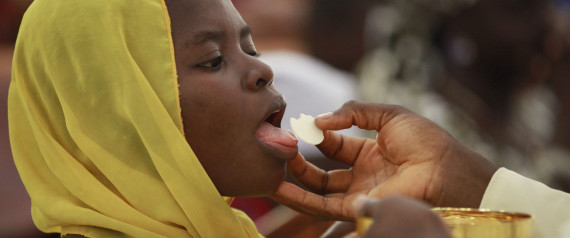Time and again, as I go about the work of evangelization, I encounter from both believers and non-believers, a fierce objection to the doctrine of Hell. In its most radical form, it runs something like this: how could a God who is described as infinitely good create, sustain, and send people to a place of everlasting torment? Many people have directed my attention to a video done some years ago by the comedian George Carlin, a former Catholic.
In front of a deeply sympathetic audience, Carlin exposes what he takes to be the silly inconsistency of Catholic belief: “for one mortal sin (usually having to do with sex), God will condemn you to a place where you will suffer forever in unbearable pain…but yet,” the comedian goes on in a mocking voice, “He looooves you!” Judging from their hysterical reaction, the audience can’t get enough of this. One wonders whether Carlin doesn’t have a point. Perhaps we ought simply to jettison this horrifying and apparently illogical doctrine, this superstitious holdover from a primitive time.
Well, I would suggest, not so fast. It might be wise to note first that Hell is hardly an ecclesiastical invention of the middle ages. In point of fact, “Gehenna” and the “everlasting fire” are mentioned frequently by Jesus himself, and the existence of Hell is confirmed by our greatest theologians and spiritual teachers from ancient times to the present day. And one can find a pithy defense of the doctrine in the Catechism of the Catholic Church from 1992. The belief is so persistent, I would argue, because it is a corollary of two other essential beliefs, namely, that God is love and that we are free. Let me say a word about each of these. For Catholic theology, love is not something that God does or one attribute among many that God happens to have. Rather, love is what God is.
To will the good of the other as other is the very nature, substance, and essence of God. Accordingly, God doesn’t love some and hate others; he doesn’t fall in and out of emotional states, sometimes loving and sometimes hating. To use Jesus’ own metaphor, he is like the sun that shines on the good and the bad alike. God doesn’t love us because we’ve been morally upright; rather, whatever moral goodness we have is the result of God having loved us. This is the principle, basic to all Biblical thought, of the primacy of grace.
Now rocks, trees, planets, animals, and stars respond to the divine love just by being what they are. But God made human beings in his own image and likeness, which is to say, he endowed them with mind and will and thereby invited them to respond to his love, not simply by the goodness of their being but by the integrity of their freedom. He wanted them to have the opportunity to participate personally in the love that he is. But this freedom carried with it, necessarily, a shadow, namely, the possibility of abuse. We who have been made in God’s image, can decide not to live in accord with that image; we who have been invited to answer God’s love with our love can answer it instead with resistance.
To stand athwart the divine love, to run counter to the image of God within us, to turn away from the sun that shines on us whether we like it or not, is to suffer. It is like a furnace; it is a kind of torture; it is to be in a place of tears and the gnashing of teeth.
I’m purposely using imagery for Hell here, because the definitive state of this resistance to God, the final No to God from the depths of one’s being, is precisely what the church means by Hell. And perhaps now we can begin to see why this doctrine hasn’t a thing to do with God “sending” anyone to a terrible place or “condemning” anyone to an eternal prison. As C.S. Lewis put it, “the door to Hell is always locked from the inside,” for it is always our perverse freedom, and not the divine choice, that locks us away from God. Lewis offered another extremely helpful point of clarification when he said that the love of God lights up the fires of Hell.
He meant that the suffering of Hell is caused by the very same power that produces the delight of Heaven, namely, the love that God simply is. The difference between Heaven and Hell is a function of our freedom: in the first case, it opens itself to God, and in the second case, it turns away from God. A homey image might help. There are two people at the same party. One is caught up in the joy, rhythm, music, and laughter of the gathering, and he’s having the time of his life; the other, sunk in moody self-regard, resenting the joy of those around him, sulks in irritation, tortured by the very exuberance of the party itself.
Therefore, if there are any people in Hell (and the church has never obliged us to believe that any human is in that state), they are there, not because God capriciously “sent” them, but because they absolutely insist on not joining in the party.


No comments:
Post a Comment